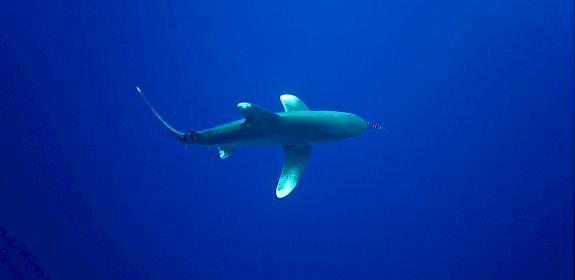
Blacktip reef shark Carcharhinus melanopterus © naturepl.com / Cheryl-Samantha Owen / WWF
i
sustainable fisheries: our perspective and priorities
There has been long-standing global concern for shark and ray populations under pressure from consumer demand for their fins, meat, skin, and liver oil. This has now reached crisis point.
Historically, most fisheries have taken place in the absence of even the most basic forms of management. In 2014, the IUCN Shark Specialist Group assessed the conservation status of over 100 shark and ray species, finding that there is a severe lack of data on sharks and rays at large. Today, the latest 2021 IUCN Red List assessment finds that over one-third are threatened with extinction and that overfishing is one of the biggest threats to their survival.
100,000,000
sharks are caught every year

Many of our oceans are being dangerously over-exploited. This doesn’t just threaten marine species and ecosystems but the livelihoods of some of the world’s poorest communities
Glenn Sant, Fisheries Programme Leader
Take an interactive deep dive into some of TRAFFIC’s marine work, from the ocean surface to the seabed.
a background to sustainable fisheries
turning the tide
There is growing acceptance at the international level that management of shark and ray fisheries is critical if further overexploitation of these resources is to be curtailed.
Broad, but non-binding commitments have been made by States to resolve the issue, however, many governments lack the resources, expertise, and political will necessary to effectively conserve the vast majority of sharks and rays. As a result, many of these species have continued to decline and international calls for a ban on products such as shark fins are on the increase. Recent years have revealed an increasing array of aquatic species also threatened by mismanagement of fisheries.
Great White Sahrk Carcharodon carcharias © Wildlife Pictures / Jêrome Mallefet / WWF
i




